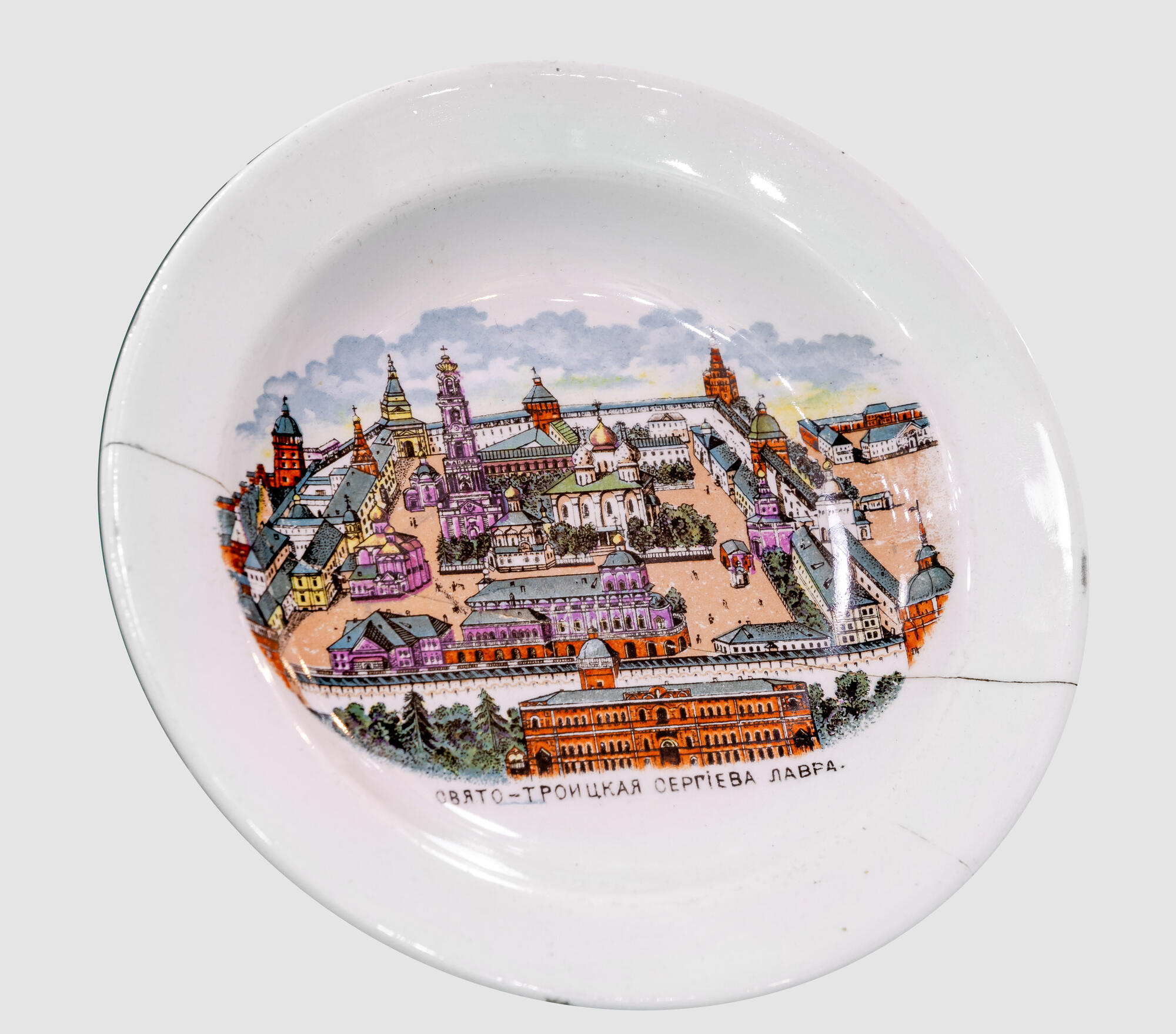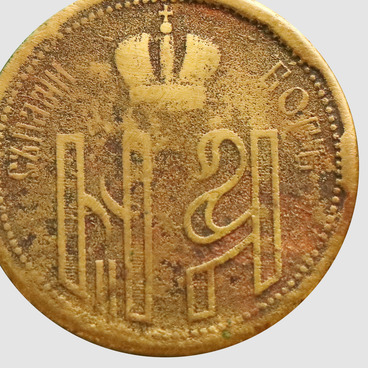Matvey Kuznetsov, a talented and savvy industrialist, came from a family of porcelain manufacturers. His factories sold porcelain items in all Russia and could compete successfully with factories of Europe and the East. Kuznetsov constantly improved the technology used at his factories. The late 19th and early 20th centuries saw colored printing catch on.
Decal is a method of transferring an image on a glass, clay, or porcelain dish upon high heat. It was used to decorate plates, cups, and glasses. The souvenir plate exhibited here is decorated using this medium. Decal uses the technique of moving an image upon contrast. First, it is printed on paper that is then covered with lacquer. After that, the paper is left to soak in water and then placed on a ceramic or glass surface. High temperature causes the paint to bake into the surface, forming a hard homogeneous mass. If the colors resulted too pale, the multi-colored decal was finished by hand.
Artists borrowed plots for decals from life and history. Such glass, porcelain, and ceramic items were popular among customers who wanted to make their houses cozier and keep an important memory from their life.
Dmitry Donskoy is believed to have started the pilgrimage of the grand Russian princes and tsars to the monastery. He himself confessed to His Reverence Sergius in his home many times. The last major walking pilgrimage to the Trinity Lavra of St. Sergius was the procession of 1892 to celebrate Sergius of Radonezh’s 500th death anniversary. The procession walked from Moscow to the Lavra for four days and was several kilometers long.
The souvenir plate depicted the Trinity Lavra of St. Sergius. The Trinity Cathedral is the main cathedral and the most ancient building in the monastery that survived to our day, the first stone building of the Lavra. It was erected “to honor” the founder of the monastery, St. Sergius of Radonezh.
Decal is a method of transferring an image on a glass, clay, or porcelain dish upon high heat. It was used to decorate plates, cups, and glasses. The souvenir plate exhibited here is decorated using this medium. Decal uses the technique of moving an image upon contrast. First, it is printed on paper that is then covered with lacquer. After that, the paper is left to soak in water and then placed on a ceramic or glass surface. High temperature causes the paint to bake into the surface, forming a hard homogeneous mass. If the colors resulted too pale, the multi-colored decal was finished by hand.
Artists borrowed plots for decals from life and history. Such glass, porcelain, and ceramic items were popular among customers who wanted to make their houses cozier and keep an important memory from their life.
A visit to the Holy Trinity Monastery had a very big spiritual and moral importance for a Russian man. The Holy Trinity Monastery was founded in the 14th century by the most venerated Russian saint Sergius of Radonezh. Pilgrims from all corners of Russia poured to the Trinity Monastery.
Dmitry Donskoy is believed to have started the pilgrimage of the grand Russian princes and tsars to the monastery. He himself confessed to His Reverence Sergius in his home many times. The last major walking pilgrimage to the Trinity Lavra of St. Sergius was the procession of 1892 to celebrate Sergius of Radonezh’s 500th death anniversary. The procession walked from Moscow to the Lavra for four days and was several kilometers long.
The souvenir plate depicted the Trinity Lavra of St. Sergius. The Trinity Cathedral is the main cathedral and the most ancient building in the monastery that survived to our day, the first stone building of the Lavra. It was erected “to honor” the founder of the monastery, St. Sergius of Radonezh.



